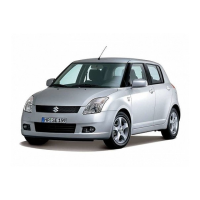Maintenance
115
AXLE TYPES
Safety Precautions
No welding is permitted on AL-KO Axles
It is important that the wheel and hub/ brake
drum are compatible. This mean that the
PCD, wheelbolts and inset must all be
compatible with both the hub/brake drum
and the wheel rim.
Particular attention must be paid to the
recommended torque figures for the
wheelbolts (see pg 16).
The axle type details shown on axle type
plates must not be obscured or made
illegible by application of any additional
surface finish.
Operating Instructions
Service Brake
When the towing vehicle is braking or
travelling down hill, the overrun device shaft
is pushed in (dependent on the magnitude of
the thrust on the shaft) and presses on the
overrun lever. This acts on the bowden
cables and expander mechanism, which in
turn expands the brake shoes applying the
wheel brakes.
Reversing
When the towing vehicle is reversing, the
overrun device shaft is pushing in, applying
the brakes via the overrun lever, brake rod
system, bowden cables and the expander
mechanism.
The backwards rotation of the brake drum
causes the secondary brake shoe to
collapse cancelling out the braking effect,
allowing the trailer to move backwards. At
the same time the transmission lever swings
back and compensates for the entire travel.
When reversing up a slope or on a loose
surface the brakes may apply themselves,
Correct maintenance and set up of the
brakes will help prevent this. Incorrect
adjustment of the wheel brakes or Linkages
will result in making reversing difficult.
Hand Brake
With the gas strut version, pull the
handbrake lever until upright. With the spring
cylinder version, pull the handbrake lever
right up to the last tooth. The caravan is then
braked.
IMPORTANT NOTE
Please note that with the handbrake fully
applied, the caravan/trailer is able to move
backwards by 25 cms until the spring
cylinder/gas spring takes effect.
Maintenance and Cleaning
Maintenance of Euro-Plus/Euro-Compact
and Euro-Delta.
The above semi-trailing axles come fitted
with maintenance free wheel bearings
(greased and sealed for life) and no
adjustment is necessary.
NOTE: The hub bearing is not protected
against water ingress. Check wheel brake
linings for wear every 10,000 kilometers or
every 12 months via the inspection hole
(Fig. 5/Item 1). Adjust if necessary. Where
continuous travel in hilly regions or high
mileage is experienced, earlier inspection
and adjustment may be necessary.
NOTE: The flanged hub-nut, located under
the dust cap, used to keep the brake drum
in situ, is a ONE-SHOT NUT (ie. must only
be used once). If removed it must be
Fig. 4
Fig. 5

